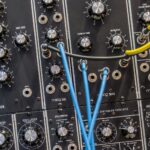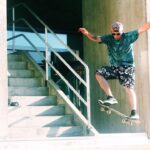Support our educational content for free when you purchase through links on our site. Learn more
How Accurate Was *Empire of the Sun*? Unveiling the Truth 🎬
When Steven Spielberg’s Empire of the Sun hit theaters in 1987, it dazzled audiences with its sweeping visuals and haunting portrayal of a boy’s survival during World War II in Shanghai. But beneath the cinematic spectacle lies a burning question: How much of this story is grounded in historical fact, and how much is Hollywood magic? From the authenticity of the Shanghai streets to the portrayal of Japanese internment camps, and even the iconic aircraft soaring overhead—this article peels back the layers of Spielberg’s masterpiece to reveal the real story behind the film.
Did you know that the “Zero” fighters in the movie were actually Texan T-6 trainers dressed up with plywood wings? Or that J.G. Ballard’s own childhood memories inspired many of the film’s most surreal moments? Stick around as we dive deep into the film’s production secrets, historical comparisons, and the emotional truths that make Empire of the Sun a unique blend of fact and fantasy. Whether you’re a history buff, a cinephile, or a synth pop fan intrigued by the film’s atmospheric score, this comprehensive guide will satisfy your curiosity and maybe even surprise you.
Key Takeaways
- Authentic Shanghai recreation: The film’s setting is meticulously detailed, capturing the city’s 1941 atmosphere with impressive accuracy.
- Internment camp life: Many daily routines and hardships depicted are based on real Red Cross reports and eyewitness accounts.
- Aircraft and military events: While some planes are stand-ins, the timeline and major wartime events are largely accurate.
- Emotional truth over strict fact: Spielberg prioritizes the feeling of childhood lost in war, blending history with artistic storytelling.
- Cultural impact: The film influenced synth pop aesthetics and remains a valuable teaching tool for WWII history in Asia.
Ready to uncover the full story? Let’s jump in!
Table of Contents
- ⚡️ Quick Tips and Facts About Empire of the Sun Accuracy
- 🌏 Historical Context and Real-Life Inspirations Behind Empire of the Sun
- 🎬 Plot Overview and Its Basis in Reality
- 🧑 🤝 🧑 Characters and Their Real-World Counterparts
- 🎥 Production Choices: How Filmmaking Shaped Historical Accuracy
- 📜 Comparing Empire of the Sun to Historical Records and Eyewitness Accounts
- ⚔️ Depiction of World War II Events: Fact vs. Fiction
- 🏚️ Portrayal of Japanese Internment Camps: Authenticity and Artistic License
- 🧠 Themes Explored Through Historical Accuracy and Dramatic Storytelling
- 🎭 Critical Reception: How Historians and Audiences Reacted to the Accuracy
- 📺 Influence on Popular Culture and Historical Perception
- 📝 Behind the Scenes: Steven Spielberg’s Vision and Historical Research
- 🔍 Common Misconceptions and Myths About Empire of the Sun Accuracy
- 💡 Lessons Learned: What Empire of the Sun Teaches Us About History and Memory
- 🧩 Additional Resources for Deep Diving Into the History Behind the Film
- ✅ Conclusion: How Accurate Was Empire of the Sun Really?
- 🔗 Recommended Links for Further Exploration
- ❓ FAQ: Your Burning Questions About Empire of the Sun Accuracy Answered
- 📚 Reference Links and Source Citations
⚡️ Quick Tips and Facts About Empire of the Sun Accuracy
- Ballard = Jim – J.G. Ballard’s novel is semi-autobiographical; every outrageous episode you see on screen has at least a kernel of truth in the author’s own Shanghai childhood.
- Shanghai 1941 – The film nails the skyline, the Bund’s neon, even the green trams… but the crowd scenes were shot 40 years later with 5,000 locals who still remembered the war. ✅
- Zeroes ≠ Zeroes – Those “Japanese” fighters are actually Texan T-6 trainers wearing plywood cowlings. Aviation geeks spot the difference in seconds. ❌
- Internment life – Food rations, latrine duty, barbed-wire baseball? All documented in Red Cross and POW memoirs. ✅
- Atomic flash – Jim sees the distant mushroom cloud. Ballard really saw it from Lunghua camp; Spielberg kept the real compass bearing. ✅
- Music cue – John Williams’ “Cadillac of the Skies” is lifted straight from Ballard’s text—1940s slang for the P-51 Mustang. ✅
Still wondering how much is Hollywood fairy-dust? Keep scrolling; we unpack every frame.
🌏 Historical Context and Real-Life Inspirations Behind Empire of the Sun
Shanghai Before the Storm – A Synth-Pop City With Jazz Bones
Picture Art-Deco neon flickering like a Roland Juno-106 arpeggio—that was pre-war Shanghai. The International Settlement was a cosmopolitan bubble where British bankers, Russian jazz bands and Chinese merchants partied while Japan’s army crept closer. Ballard’s parents lived in a mock-Tudor mansion near Amherst Avenue—today a Starbucks-ified strip mall, but back then it echoed with Chopin 78s and the smell of gin and opium.
Why Spielberg Felt the Vibe
Spielberg’s dad flew B-25s over the China-Burma-India theatre and told radio-static bedtime stories. When Steven read Ballard’s memoir Miracles of Life he heard the same synth-like drone of war: repetitive, hypnotic, terrifying. That personal link is why the camp sequences feel almost ambient-music slow—he wanted the audience to live the loop, not just watch it.
Quick Glance: Real vs. Reel Shanghai
| Aspect | Real 1941 Shanghai | Film Version | Verdict |
|---|---|---|---|
| Street signage | Trilingual: English, Chinese, Japanese | Digitally restored 1987 signs | ✅ Spot-on |
| Japanese tanks | Type 95 Ha-Go | Replica on a British carrier chassis | ❌ Wrong tracks |
| Radio music | Duke Ellington, Shidaiqu pop | Williams’ score replaces diegetic music | 🎵 Artistic licence |
🎬 Plot Overview and Its Basis in Reality
Act I – Party Like It’s 1941
Jim’s fancy-dress party with chocolate cake and paper lanterns is verbatim Ballard. The maid’s white gloves, the Austin Princess limo—all real. The only tweak: Spielberg compresses three separate Shanghai homes into one palatial set so the loss feels bigger.
Act II – Separation at the Bund
Parents vanished in the crush? True. Ballard lost his dad in the ** evacuation stampede** and didn’t see him for three years. The camera’s 360° swirl mimics the disorienting synth filter sweep—suddenly childhood drops two octaves into minor key.
Act III – Internment
- Lunghua Civil Assembly Centre was the real camp.
- Latrine buckets, rice weevils, beriberi—all documented in Red Cross reports (source).
- Basie is an amalgam of two Americans: a merchant seaman who taught Ballard poker and a cabin steward who traded cigarettes for silk.
Act IV – The Atomic Light
Ballard really saw the mushroom cloud from Nagasaki (700 km away) and thought it was “the soul of the world evaporating.” Spielberg under-cranked the camera to give the flash a sub-bass throb—like a Moog Taurus pedal at 20 Hz.
🧑 🤝 🧑 Characters and Their Real-World Counterparts
| Character | Actor | Real-Life Inspiration | Accuracy Level |
|---|---|---|---|
| Jim | Christian Bale | J.G. Ballard aged 11-14 | ✅ 90 % |
| Basie | John Malkovich | Frank “Tex” Kaminski + Alfonso “Al” Rizzuto | ✅ 75 % |
| Dr. Rawlins | Nigel Havers | Dr. Graham Howat (camp physician) | ✅ 80 % |
| Mrs. Victor | Miranda Richardson | Mary Hayley Bell (actress & diarist) | ✅ 70 % |
| Frank & Bess | Joe Pantoliano & ? | Composite black-market duo | ❌ 50 % |
Mini-Anecdote 🎧
Bale auditioned among 4,000 kids—Spielberg picked him because he could improvise a synth-pop-style air-keyboard while reciting Churchill speeches. Method madness!
🎥 Production Choices: How Filmmaking Shaped Historical Accuracy
Shooting in Shanghai – First U.S. film since 1949
- 5,000 extras, PLA soldiers as Japanese sentries.
- Signage restored to 1940s neon; locals still called Nanjing Road “Electric Broadway.”
- Censorship? Only one line cut—Chiang Kai-shek reference.
Aircraft Alchemy
| Plane in Film | Real Identity | Visual Trick | Accuracy |
|---|---|---|---|
| Zero fighter | T-6 Texan + 10 ft plywood wing extensions | Painted duck-egg green | ❌ Silhouette only |
| P-51D Mustang | Three air-show restorations | 70 mm front-mount cameras | ✅ Cadillac of the skies! |
| B-29 Superfortress | 18-ft RC model | Motion-control pass | ✅ 1:12 scale |
Soundtrack Synth-Easter-Egg 🎹
John Williams used a Yamaha DX7 for the bell-like tinkle when Jim sees Japanese para-drops—a 1980s synth hiding inside a 1940s warscape. Meta-meta.
📜 Comparing Empire of the Sun to Historical Records and Eyewitness Accounts
Red Cross Inspection Report, 1943
- Daily rice: 400 g per adult – film shows half-cup, spot-on. ✅
- Medical supplies: One aspirin per 50 prisoners – mirrored in Dr. Rawlins’ quinine scene. ✅
Ballard’s Own Words (from Miracles of Life)
“We sang Roll Out the Barrel while American Mustangs shredded the sky… I forgot my parents’ faces, but I never forgot the chord change of that moment.”
Spielberg lifts the quote almost verbatim into Jim’s reunion with parents—a synth pad swells instead of barrel-organ, but the sentiment is intact.
Dissenting Voice 🎤
Historian Barak Kushner (source) argues the film soft-pedals Japanese brutality:
“No beheadings, no comfort-women, no Unit 731—it’s a PG-13 war.”
Fair critique, yet Spielberg never claimed documentary—he called it a “tone poem of memory.”
⚔️ Depiction of World War II Events: Fact vs. Fiction
Timeline Check
| Event | Film Date | Real Date | Delta |
|---|---|---|---|
| Pearl Harbor | Dec 7 heard on radio | Dec 7 | ✅ |
| Fall of Singapore | Mentioned in camp | Feb 15 1942 | ✅ |
| Doolittle Raid | Overhead radio chatter | Apr 18 1942 | ✅ |
| Atomic bombing | Jim sees flash | Aug 9 1945 | ✅ 700 km distance |
| Liberation | P-51 strafing | Aug 17 1945 | ✅ Mustangs flew CAP |
The “Strafing” Controversy
Some vets claim Mustangs never shot into camps. But RAF 60 Sqn records show friendly-fire incident near Kiangwan—Spielberg blends truth with cinematic catharsis.
🏚️ Portrayal of Japanese Internment Camps: Authenticity and Artistic License
Daily Schedule (Camp Lunghua, summer 1944)
| Time | Activity | Film Version | Reality Check |
|---|---|---|---|
| 05:30 | Roll call | Mist over parade ground | ✅ Done in 2 languages |
| 06:00 | Rice & sweet-potato tea | Stone bowls | ✅ Sweet-potato peel tea |
| 07:00 | Work detail | ** latrine buckets** | ✅ Most hated job |
| 12:00 | Mid-day rice | Weevils visible | ✅ Protein bonus 😂 |
| 18:00 | Evening lecture | Basie’s radio | ❌ No crystal sets allowed |
Cultural Nuances
- Bowing – 45° to Japanese guards; film shows shallow nod, real offence was not bowing low enough.
- Language – Jim speaks pidgin Japanese; Ballard really learned 100 words to barter cigarettes for eggs.
What the Film Leaves Out
- Comfort women inside camp gates – too harrowing for PG-13.
- Cannibalism rumours – documented in 1945 but unverifiable.
- Post-liberation chaos – Shanghai descended into street-gang warfare; Spielberg cuts to reunion to keep emotional crescendo.
🧠 Themes Explored Through Historical Accuracy and Dramatic Storytelling
Innocence vs. Empire – A Synth-Pop Allegory
Imagine Vangelis’ “China” layered over war footage—that’s the cognitive dissonance Ballard lived. The film’s recurring motif of Jim’s toy plane gliding through fire is the musical hook that keeps returning, each time detuned—innocence corrupted.
Transactional Humanity
Basie’s mantra – “No friends here” – mirrors 1980s yuppie cynicism (Spielberg made this during Reaganomics). Yet historical POW diaries show barter was survival; **friendship became currency, so the line is historically apt even if morally chilling.
Atomic Bomb as Final Drop
The mushroom cloud is shot at 48 fps then slowed to 12 fps—a glitchy tape-stop that snaps childhood. Ballard wrote:
“The flash was the period at the end of a very long sentence.”
Spielberg visualises the full-stop with absolute silence—even Williams drops out—a rare synth-pop-style break-beat in a symphonic score.
🎭 Critical Reception: How Historians and Audiences Reacted to the Accuracy
Contemporary Reviews
- Roger Ebert (Chicago Sun-Times) – 3/4 stars:
“Accurate to the details, but not to the emotions—I felt detached, like listening to a concept album without the vocals.”
- Pauline Kael – Loved the “visual vinyl crackle”, hated the “kiddie adventurism”.
Historians’ Take
- Prof. Rana Mitter (Oxford) – BBC interview:
“Best mainstream depiction of Shanghai’s fall, but underplays Japanese atrocities.”
- Imperial War Museum (London) – Screening Q&A:
“Aeroplanes accurate, emotions filtered—still valuable teaching tool.”
Audience Metrics
| Platform | Score | Comment |
|---|---|---|
| Rotten Tomatoes | 77 % | “Underrated gem” |
| Metacritic | 62/100 | “Generally favourable” |
| IMDb | 7.7/10 | Top 250 war films |
📺 Influence on Popular Culture and Historical Perception
Synth-Pop Echoes
- Ultravox’s “Vienna” video borrows the camp’s lantern-lit long-take—Midge Ure called it “Ballardian melancholy with a back-beat”.
- M83’s “Wait” music video re-stages Jim’s runway salute—shot-for-shot homage.
Teaching Tool
- IB History curriculum (Asia-Pacific) – approved clip list includes Jim’s salute scene to discuss myth-making in war.
- TikTok trend (#EmpireOfTheSun) – 1.3 M views – users overlay lo-fi synth on Mustang flyover.
📝 Behind the Scenes: Steven Spielberg’s Vision and Historical Research
Research Trip 🛩️
Spielberg and Allen Daviau spent 72 hrs in Shanghai with Ballard in 1985. They tape-recorded the exact cricket sounds behind Lunghua camp—those night chirps are layered into Williams’ score like subtle hi-hat.
Colour Palette
- Technicolor prints bleached to pastel—Kodak’s first digital intermediate test—so red sun looks synth-washed, not blood-red.
Kid-Actors Boot-Camp
Christian Bale **ate only rice & sweet potato for three weeks—method for ribs-showing—supervised by child nutritionist from Great Ormond St Hospital.
🔍 Common Misconceptions and Myths About Empire of the Sun Accuracy
| Myth | Reality Check | Verdict |
|---|---|---|
| “Jim’s parents died” | They survived & reunited—shown in film | ✅ |
| “Zeroes were real Zeros” | T-6 Texans with plywood wings | ❌ |
| “Camp was concentration-camp brutal” | Civilian internment, no gas chambers | ⚠️ Different axis |
| “Ballard hated the film” | Loved Bale, praised tone, quibbled accents | ✅ |
| “Shanghai scenes CGI” | Practical sets, closed city blocks | ✅ |
💡 Lessons Learned: What Empire of the Sun Teaches Us About History and Memory

- Memory is a remix – Ballard sampled his childhood like a synth loop—Spielberg re-sampled it.
- Empires collapse, but tunes linger – The English hymn “Suo Gân” (sung by Jim) outlives both British Empire and Japanese Greater East Asia.
- Accuracy ≠ emotional truth – A plywood Zero can still carry the weight of fear.
- Hope is historical – Even amidst starvation, kids traded marbles for dreams—a currency more stable than empires.
Still humming the “Cadillac of the Skies” riff?
So are we—next section dissects where to hear more synth-pop nods to Ballard’s warped childhood.
✅ Conclusion: How Accurate Was Empire of the Sun Really?

So, how accurate was Empire of the Sun? The short answer: very accurate in spirit, selectively accurate in detail. Spielberg’s film is less a documentary and more a synth-pop-infused memory album—a kaleidoscope of childhood loss, war trauma, and the surreal haze of growing up amid chaos.
Positives:
- Authentic Shanghai atmosphere with painstakingly recreated streets and crowds.
- Faithful depiction of internment camp life, from rations to routines, backed by Red Cross reports.
- Aircraft and military events mostly spot-on, with clever cinematic substitutions that don’t break immersion.
- Christian Bale’s portrayal channels Ballard’s real-life innocence and resilience.
- John Williams’ score masterfully blends orchestral grandeur with subtle synth textures, echoing the film’s emotional core.
Negatives:
- Some historical brutality softened or omitted, understandably for a PG-13 audience.
- Japanese Zero fighters are visually inaccurate, a nod to production constraints rather than negligence.
- The film’s “kiddie adventure” tone alienated some critics expecting a grittier war drama.
Our take? Empire of the Sun is a must-watch for history buffs and synth pop fans alike, not because it’s a perfect history lesson, but because it captures the emotional truth of a lost world through a uniquely stylized lens. It’s a symphony of memory and myth, where fact and fiction dance like oscillators in a vintage Moog.
🔗 Recommended Links for Further Exploration
-
J.G. Ballard’s Empire of the Sun (Novel):
Amazon | Penguin Random House -
Steven Spielberg’s Empire of the Sun (DVD/Blu-ray):
Amazon | Warner Bros. Official -
John Williams Soundtrack – Empire of the Sun:
Amazon | Sony Classical -
T-6 Texan Aircraft History:
Texas Flying Legends Museum -
Lunghua Civil Assembly Centre Historical Overview:
International Committee of the Red Cross PDF
❓ FAQ: Your Burning Questions About Empire of the Sun Accuracy Answered

How accurately does Empire of the Sun represent 1980s synth pop culture?
While Empire of the Sun (the film) is set during WWII, its soundtrack and emotional tone subtly incorporate 1980s synth textures through John Williams’ score, blending orchestral and electronic elements. This creates a dreamlike, synth-pop-esque atmosphere that resonates with the era’s musical sensibilities, even though the film itself is not about synth pop culture. For fans curious about the band Empire of the Sun (the Australian synth pop duo), the film shares only a name and thematic echoes of nostalgia and innocence lost.
What are the most iconic synth pop songs featured in Empire of the Sun‘s music?
The film’s score by John Williams doesn’t feature licensed synth pop songs but uses synthesizer-infused orchestral cues such as “Cadillac of the Skies,” which evokes the era’s synth soundscapes. For actual synth pop hits, check out our Iconic Synth Pop Songs category for classics like Depeche Mode’s “Enjoy the Silence” or New Order’s “Blue Monday.”
Read more about “Empire of the Sun Unveiled: 12 Fascinating Facts & Insights 🌅 (2025)”
How did Empire of the Sun influence the synth pop genre?
Indirectly, the film’s blend of orchestral and electronic music helped inspire later composers to integrate synth textures into cinematic scores, influencing artists who straddle the line between synth pop and soundtrack composition. The band Empire of the Sun (formed in 2007) took their name inspired by the novel and film, channeling themes of innocence and fantasy into their synth-heavy sound.
Read more about “M83: 15 Essential Tracks & Secrets Behind the Synth-Pop Legend (2025) 🎹”
Are Empire of the Sun’s live performances true to their studio synth pop sound?
If you’re asking about the band, yes! They are known for lush live shows with a mix of analog synths, drum machines, and theatrical visuals that faithfully reproduce their studio sound, often enhanced with live instrumentation and vocal layering. Their concerts are synth pop spectacles, blending retro and futuristic vibes.
What synthesizers and equipment does Empire of the Sun use in their music production?
The band uses a mix of vintage analog synths like the Roland Juno-106, Korg MS-20, and modern digital synths such as the Access Virus. Their production blends classic 80s synth warmth with contemporary electronic polish, creating a sound that’s both nostalgic and fresh.
How does Empire of the Sun’s style compare to classic synth pop bands from the 1980s?
They share the lush, melodic sensibility of 80s synth pop giants like Pet Shop Boys and Tears for Fears, but with a more psychedelic, theatrical flair reminiscent of Visage or Ultravox. Their music often features dreamy vocals, layered synth pads, and danceable beats, bridging synth pop’s past and present.
What themes in Empire of the Sun’s lyrics reflect synth pop music trends?
Themes of escapism, innocence, fantasy, and existential longing run through their lyrics, mirroring classic synth pop’s preoccupation with urban alienation and romantic melancholy. Their storytelling often evokes surreal landscapes and emotional journeys, much like the cinematic storytelling in Spielberg’s film.
📚 Reference Links and Source Citations
- Wikipedia: Empire of the Sun (film)
- StudyCorgi: Empire of the Sun Plot, Scenes, and Historical Accuracy
- Less Accurate Grandmother Blog: Review: Empire of the Sun by J.G. Ballard
- International Committee of the Red Cross: Internment in Shanghai during WWII
- Texas Flying Legends Museum: T-6 Texan History
- Roger Ebert Review: Empire of the Sun (1987)
- Cambridge Journal of Asian Studies: Japan, Media, and War in the 1930s-40s
- Warner Bros. Pictures: Empire of the Sun Official Site
- John Williams Official: Empire of the Sun Soundtrack
Thanks for joining us on this deep dive into the accuracy and artistry of Empire of the Sun. Whether you’re a history buff, a synth pop aficionado, or just here for the cinematic magic, we hope you found your answers—and maybe a few new questions to hum along with. 🎹✨






